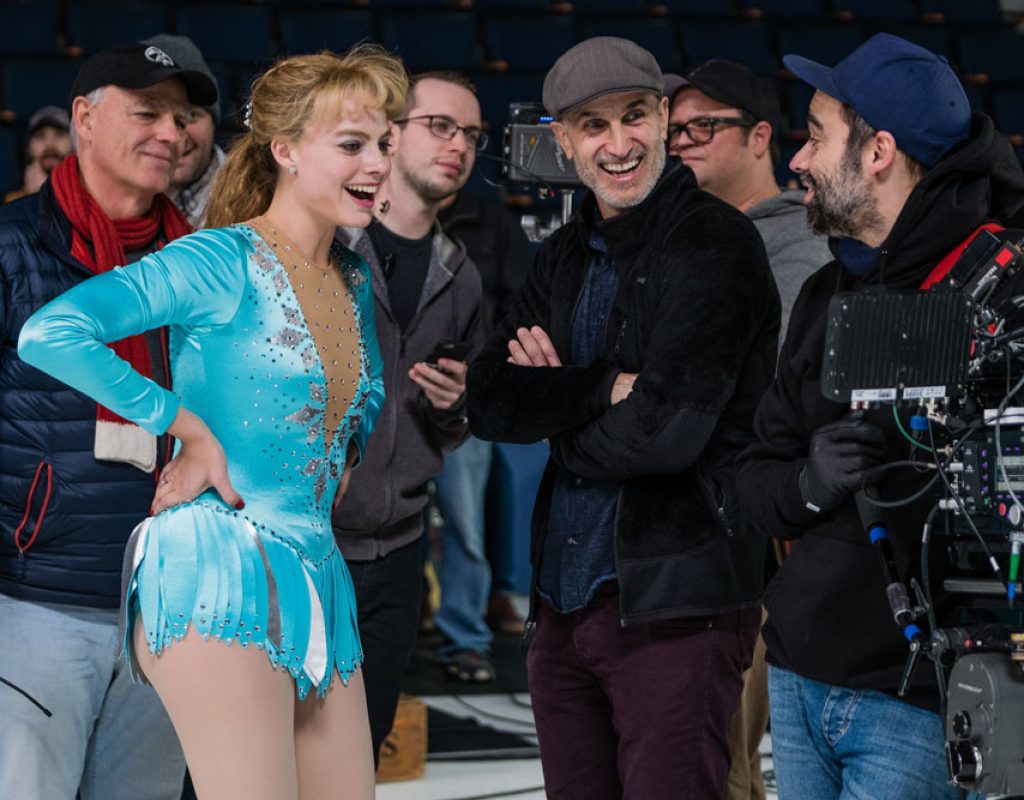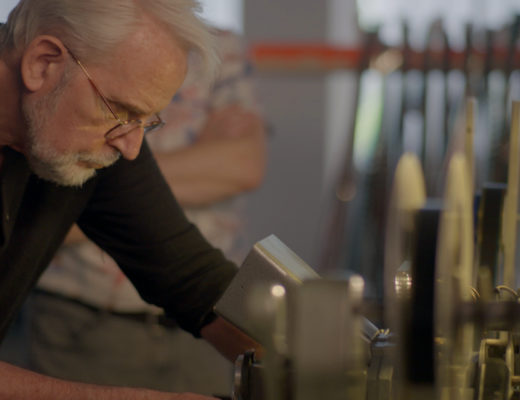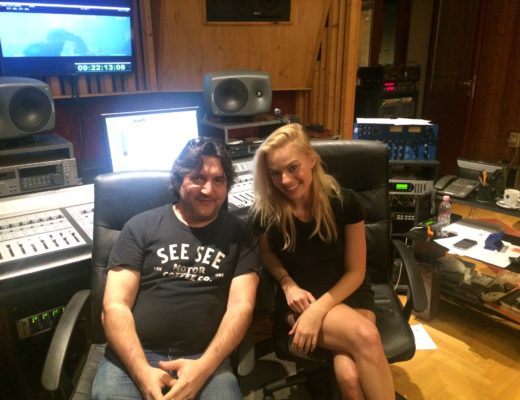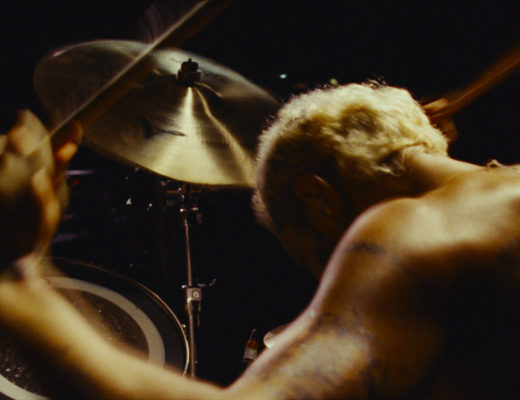Tatiana Riegel, ACE just won the ACE Eddie for Best Edited Feature Comedy and has been nominated for this year’s Best Editing Oscar for her work on I, Tonya. Riegel’s previous nominations and awards include a 2009 Daytime Emmy nomination for Imaginary Bitches, and a 2008 ACE Eddie win for The Half Life of Timofey Berezin.
I, Tonya, was directed by Craig Gillespie, with whom she’s worked on several films including The Finest Hours, Million Dollar Arm and Lars and the Real Girl. Other work includes There Will Be Blood, Fright Night and The Men Who Stare At Goats. TV work includes Game Of Thrones and House, M.D. As an assistant editor, she worked on JFK, and Pulp Fiction, among others.
As you may be able to guess, this is an interview I’ve been pursuing for a while and Tatiana did not disappoint. She is just as skilled at articulating the nuances of her craft as she is at editing.
(This interview was transcribed with SpeedScriber. Thanks to Martin Baker at Digital Heaven)
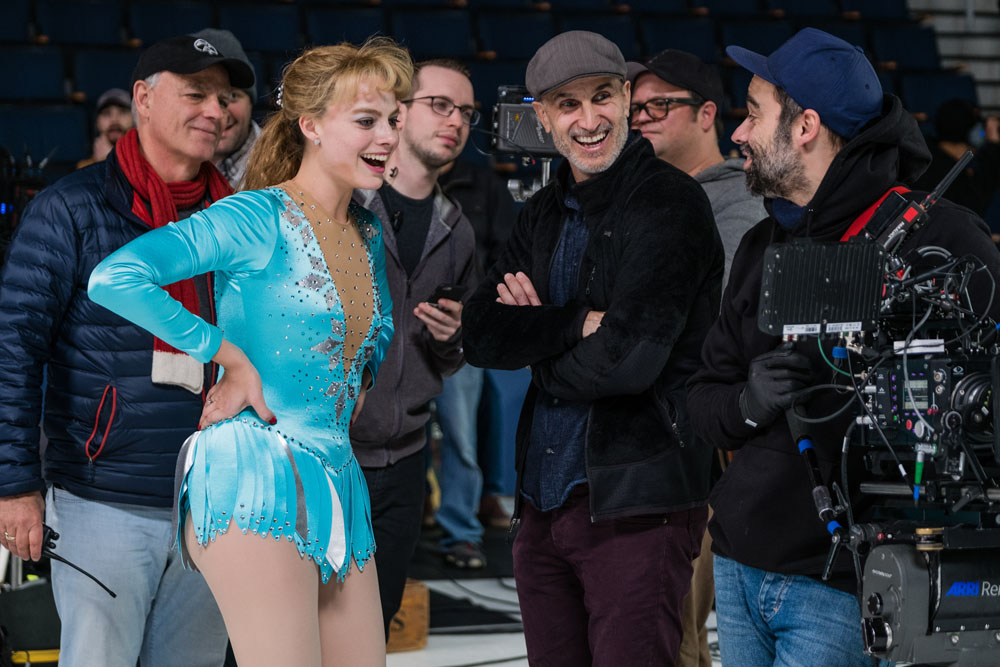
HULLFISH: You’ve worked with director Craig Gillespie before.
RIEGEL: A lot. This is our fifth feature. We also did a pilot together.
HULLFISH: Tell me a little bit about what that does for you, to work with the same director again: the comfort level or the shorthand. What are the editorial benefits?
RIEGEL: It’s a wonderful and unique luxury to have that. It’s remarkable actually. Craig and I started working together 10 years ago on Lars and the Real Girl. We now have a knowledge of each other, of our sensibilities and of our humor that makes it simple… we just understand each other so much.
Craig told me he was going to send me the script for I, Tonya, and at first, I thought, “Really? Tonya Harding?” I had the same reaction that I suspect a lot of people have to the film at first. Then I read it and right off the bat I was like, “Oh I totally get it”. I understand why they chose Craig, he just was perfect for it. It was an amazing script and I knew that Craig was going to just bring even more to it and that I would love working on it. Particularly with a film like this, where there is a very delicate dance of tone, having a good knowledge of the director and what they’re going to want and need is invaluable.
HULLFISH: The tone is one of those things that I really respected with the movie. Most of it is comical but then it does dip into these moments, especially with Allison Janney, playing the character of Tonya’s mom, where you do get glimpses of humanity you get glimpses of this tough exterior slipping a little bit. The tone is always shifting.
RIEGEL: That’s exactly the thing that attracted me initially to the script once I read it; what I found so unique. First of all, the way they told the story with these different/unreliable viewpoints. The film is filled with characters that you don’t think you’re going to like. I was very guilty of having an opinion about what I thought were the facts. Not that the film is trying to tell you ultimately how to feel about it, you can still have your own opinion about who did what and when, but it expands your knowledge of who these people are and why they may have done what they did. Even with Tonya Harding’s mother who’s just a horrible horrible mother in the film. She still does have a couple of positive qualities too.
For example, she worked a tough job as a waitress to pay for the lessons and she took her at dawn every morning to the rink. I always wonder what her own childhood was like. She did the best she knew how and there is something that you can connect to on an emotional level even when they’re frankly a pretty vile person. You can still connect and appreciate in some way. Obviously, Tonya Harding is a tough woman, but now you can see why she is the way she is and what led her to become this kind of person… and survive it.
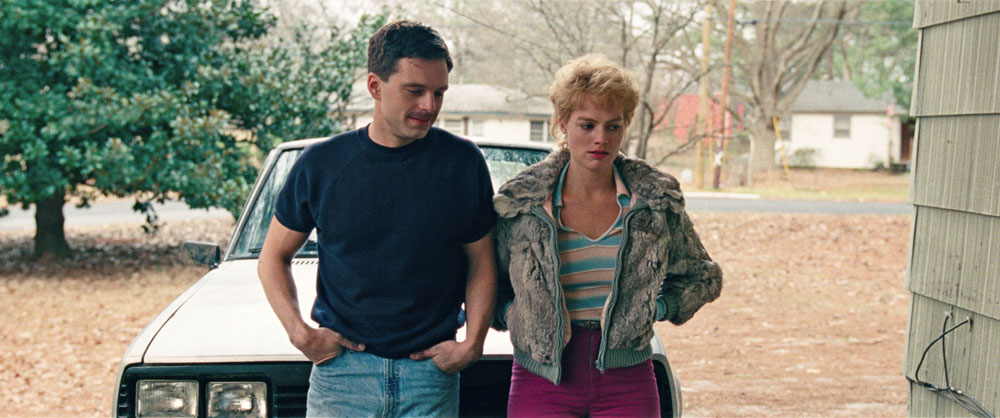 HULLFISH: You had fantastic performances to work with, but then you also have to curate those performances and be a steward of those performances. Are there specific places where you can remember doing that or thinking, “Hey I’ve got this great performance, but it can be enhanced with editing?”
HULLFISH: You had fantastic performances to work with, but then you also have to curate those performances and be a steward of those performances. Are there specific places where you can remember doing that or thinking, “Hey I’ve got this great performance, but it can be enhanced with editing?”
RIEGEL: I think that’s the case with every movie. You’re always trying to make the most of every performance but it’s even more fun with actors who are so capable: they gave me a huge range of material so I could pick and choose and build and sculpt the arc of each character with their performance throughout. In this film, there was nobody that was a weak link. It was an embarrassment of riches. Every single performance was just flawless and gave unlimited options all with honesty.
All of the departments did that. From the camera department to the hair and makeup to the costumes to later in post our sound and our composer. Everybody delivered, which made my job ridiculously wonderful because by the time it got into my room I got to spend time really making the story, and not having to fix or work around too many problems. It was really quite luxurious.
HULLFISH: One of the places that I remember I really liked, was a moment where you could have cut away sooner but you held a moment longer: it was after a point where the mom — who could care less for the affections of her daughter — tells Tonya to give her a kiss before she leaves. And you hold on the mom after the kiss for a moment.
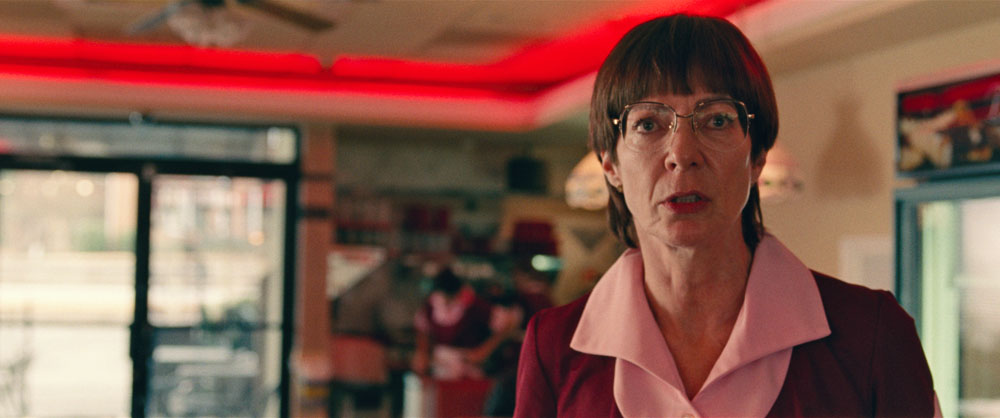 RIEGEL: I love that scene. I really love that scene! I believe it was a scene that was put into the script rather late in the process. I think that Craig actually requested and Steven (scriptwriter, Steven Rogers) to write: a beautiful and important scene needed in that spot. It’s interesting because Craig shot it two different ways in terms of angles. He shot it in a more conventional way, which is a little bit more “front on,” where you see faces more and then he shot it the way that you saw in the film. It’s often from the back or profiles of both actors. I cut it both ways and sent it to the director early on. I told him my great preference was for the more mysterious, darker and manipulative on LaVona’s part. It’s one of my favorite scenes actually, and that moment – kiss your mother – is such a great moment of holding power over her daughter – the look on Allison’s face is just brilliant. This is the third film I’ve actually done with Allison Janney and I’ve told her several times I would be happy to be her personal editor.
RIEGEL: I love that scene. I really love that scene! I believe it was a scene that was put into the script rather late in the process. I think that Craig actually requested and Steven (scriptwriter, Steven Rogers) to write: a beautiful and important scene needed in that spot. It’s interesting because Craig shot it two different ways in terms of angles. He shot it in a more conventional way, which is a little bit more “front on,” where you see faces more and then he shot it the way that you saw in the film. It’s often from the back or profiles of both actors. I cut it both ways and sent it to the director early on. I told him my great preference was for the more mysterious, darker and manipulative on LaVona’s part. It’s one of my favorite scenes actually, and that moment – kiss your mother – is such a great moment of holding power over her daughter – the look on Allison’s face is just brilliant. This is the third film I’ve actually done with Allison Janney and I’ve told her several times I would be happy to be her personal editor.
HULLFISH: After watching this performance I think that I would say the same thing to her if I was in that position. Absolutely.
With the “kiss your mother” scene, the angles were kind of oblique and also, I assume, you’re trying to play with the timing of how long it takes Tonya to concede to the kiss and who to be on in this power struggle.
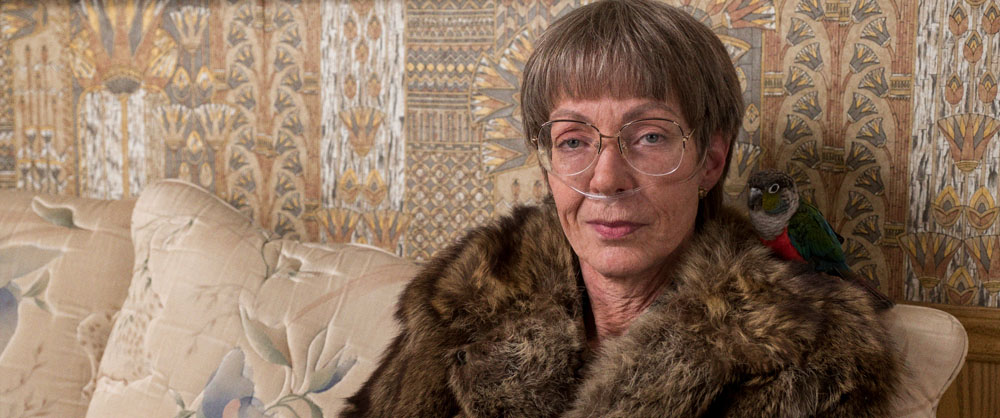 RIEGEL: As the scene progresses they’re having this very awkward crazy conversation about domestic abuse and who hits who. Tonya is telling her mother that LaVona used to hit her father. It’s a crazy scene. It’s a discussion about a brutal topic and then the brutality is shown throughout the film. Tonya gets up to leave the scene because she just doesn’t want to deal with it anymore, that’s her protection, to go to practice and then her mom just comes up one more time and says, “Kiss your mother,” total power play and which is just the last thing in the world Tonya wants to do. So she goes over and gives the least affectionate kiss humanly possible and then escapes.
RIEGEL: As the scene progresses they’re having this very awkward crazy conversation about domestic abuse and who hits who. Tonya is telling her mother that LaVona used to hit her father. It’s a crazy scene. It’s a discussion about a brutal topic and then the brutality is shown throughout the film. Tonya gets up to leave the scene because she just doesn’t want to deal with it anymore, that’s her protection, to go to practice and then her mom just comes up one more time and says, “Kiss your mother,” total power play and which is just the last thing in the world Tonya wants to do. So she goes over and gives the least affectionate kiss humanly possible and then escapes.
HULLFISH: Why would LaVona even want this kiss, except to exert dominance?
RIEGEL: That’s what abuse is all about. It’s a power and a control issue and control is something that Tonya Harding had to face so much in her life with her mother or her husband or the skating community trying to control her and make her into a person that she’s not. She was one of the most spectacular athletes and they didn’t just appreciate that at face value. They wanted to constantly push a square peg into a round hole and make her something she wasn’t.
HULLFISH: There’s another very tense scene in the kitchen with a knife. How did you approach that scene?
https://www.youtube.com/watch?v=J4FnNk9faPs
RIEGEL: This is a very simple dinner when it starts off – spoiler alert, by the way – two people quietly at dinner, not talking to each other and it escalates quickly into an argument with her mom crazily grabbing anything off the table she can get her hand on and heaving it at Tonya who defends herself only by ducking then one of the things LaVona grabs is a knife and throws it at her Tonya. It’s wonderful to watch in the theater because every time we get this huge gasp from the audience. Not only the audience, but the characters themselves are stunned. Lavona is stunned that she’s done that. Tonya’s stunned. You then wait and wait and wait. The tension is stretched and pulled and ratcheted up cutting back and forth between them as the audience wonders what they’re going to do. They, as characters, are wondering what the other is going to do. And it continues to be pulled and pulled tighter and tighter until Tonya takes the knife and slaps it down on the table and then just walks away and we are left with LaVona just standing there. All you hear is her breathing and it is as tense as you can possibly get: holding it for as long as possible until just before it breaks and then smashing LaVona in with that interview of: “Oh please, show me a family that doesn’t have ups and downs” which is her character, again, blowing off anything that she did wrong in this crazy absurd way but mostly is this marvelous release of tension for the audience with a ridiculous comic moment.
HULLFISH: Editing is so much like music where you build a tension and then provide release and that scene is definitely a high example of that. You mentioned in the end of that scene that all you hear is her breathing. I can’t remember: is there a music cue throughout that scene or do you do it dry?
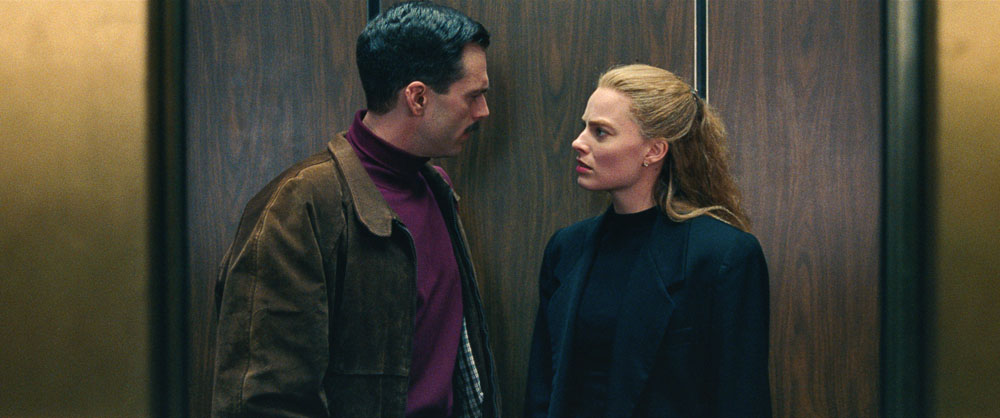 RIEGEL: No, no. It’s dry. There’s a music cue at the end of the other scene we were talking about – that “kiss your mother” scene that I love – it’s Vivaldi’s Four Seasons that is just this beautiful piece that’s the absolute antithesis of what’s happening on screen and then again with her ZZ Top skate.
RIEGEL: No, no. It’s dry. There’s a music cue at the end of the other scene we were talking about – that “kiss your mother” scene that I love – it’s Vivaldi’s Four Seasons that is just this beautiful piece that’s the absolute antithesis of what’s happening on screen and then again with her ZZ Top skate.
HULLFISH: Talk to me about the use of music, because there’s a lot of pop music cuts. There’s a great music cut that you obviously started at a specific point so that it paused at a dramatic moment at the door.
RIEGEL: Yeah it’s Fleetwood Mac. It’s a whole montage section where it starts there and she walks to the door and there’s a little break in the music and then it picks up again as she opens the door. That’s Fleetwood Mac and that exact moment worked perfectly. There is also a wonderful rhythm thing a little bit later that just builds and builds during the interview section in that montage when she’s talking to the audience. Music in this film was so much fun to do. We had 40 some-odd needle drops and then score on top of that. None of the music was in the script. That was something that Craig really wanted to do to bring energy, time period, emotion, all of these different things to the film which I thought was absolutely brilliant. Early on he got some 400 songs from the music supervisor and he just started listening to them and then he sent them to me and I started listening to them and during the shooting process, he had some ideas of things that might work. For example Devil Woman, Craig knew early that he wanted to use that song when LaVona is at the skating rink with young Tonya and then others songs were experimentation, trying everything – moving them around and then crossing our fingers and trying to figure out if we could get clearance and pay for them, which is always a hurdle. We proceed as if everybody was going to say ‘yes’ and we had all the money in the world. And then let other people like our music supervisor, Sue Jacobs, figure that out. She worked miracles, thank goodness.
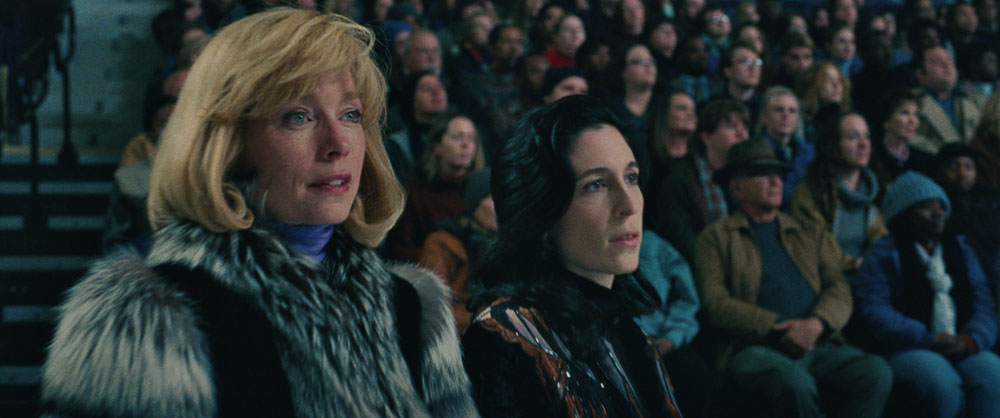 HULLFISH: Yeah, there’s nothing worse than finding that perfect cut of music and then not being able to clear it or being able to pay for it.
HULLFISH: Yeah, there’s nothing worse than finding that perfect cut of music and then not being able to clear it or being able to pay for it.
RIEGEL: The Fleetwood Mac example is one I was absolutely terrified about because they happen to be a very difficult band to clear. Not only are they expensive but there are a lot of band members, so you have to get a lot of people to say yes. We couldn’t find anything else to work there and I didn’t know what we were going to do if they don’t say yes. I’ve worked on other projects where you couldn’t get something that was perfect for the film – that was just flawless – but you just couldn’t get it. It’s heartbreaking to know that something could have been better and you can’t use it for some reason. So, with this particular cue, I was just over the moon when we actually got it, because I didn’t know what our other options were going to be. It worked so well in the very beginning of it and it built throughout the whole montage so wonderfully. I was thrilled. This film was very different than anything that I have done before, musically. The first thing is that there were so many songs.
I work in a way where I try to avoid putting music in for a long time. A lot of people don’t do that. A lot of people want to see something as finished as possible early on. I, frankly, would argue against that as much as possible because I think many times it hurts the movie if you put movie music on too soon. I think music is so powerful and so important that if put in too soon, can cover a lot of stuff that shouldn’t be covered yet. If you can cut a scene without music and really force yourself to be efficient and honest and get a scene to work dry – get an action sequence or suspense sequence or an emotional sequence whatever it is – if you can get that sequence to really work dry, you know when you put music on you’re just going to be better. If a scene works without music, you know that that scene’s really working. The other problem that happens is that you start to have transitions from scene to scene with music and you can somehow become attached to those transitions because they work so well musically whereas if there weren’t music there, you might be freer and more apt to move a scene around and find the right place. And I often think movies have too much music.
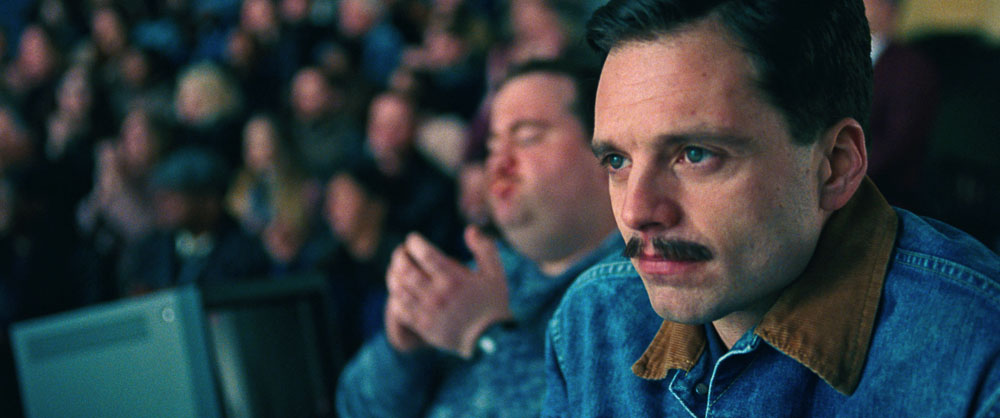 This movie has a lot of music in it but that’s just the nature of this movie. I think there are a lot of films that have too much score because music gets added in so soon and we get so used to it that if you pull it out it feels odd and then it just lives there even though perhaps it’s not needed. It’s like if you use highlighter on your book everywhere, it doesn’t stand out anymore. I always like to hold off as long as possible before putting in music. Having said that, it’s NOT the way we approached this film. So much is cut to the music we had to start putting it in early in the process. Still, I did not put music in through my whole first assembly. It wasn’t until the director came in about two weeks into it: that’s when we started trying anything and everything and seeing how it worked.
This movie has a lot of music in it but that’s just the nature of this movie. I think there are a lot of films that have too much score because music gets added in so soon and we get so used to it that if you pull it out it feels odd and then it just lives there even though perhaps it’s not needed. It’s like if you use highlighter on your book everywhere, it doesn’t stand out anymore. I always like to hold off as long as possible before putting in music. Having said that, it’s NOT the way we approached this film. So much is cut to the music we had to start putting it in early in the process. Still, I did not put music in through my whole first assembly. It wasn’t until the director came in about two weeks into it: that’s when we started trying anything and everything and seeing how it worked.
HULLFISH: One of the challenges in this movie would have been the skating scenes: to cut seamlessly between Margot and what I have to assume is a skating double. They’re seamless and very complex.
RIEGEL: Each skating sequence is very different from the others, and intentionally so. Craig wanted them all to have their own personality so he and the DP and the others really choreographed and designed each one to be quite different but obviously based on her real performances.
They did it so well. For example, the very first one with ZZ Top is when Tonya is quite young and she’s very aggressive and bold and brash and energetic and cocky. So it’s sharp and cut in a way that is much faster and a little rougher and more dynamic versus at the very end at Lillehammer where it’s all one shot: it’s not all one shot but it plays as all one shot. It actually goes back and forth between Margot and the double and then back to Margot. It is intentionally done with the simplicity of one shot to be in her head, to build tension and pressure for what’s happening with her. Then on top of that, there’s the whole technical aspect of visual effects, because, as good of a skater as Margot is, she’s not an Olympian: to do those sorts of jumps and twirls and have that speed. So we had to find those moments to cross back and forth as seamlessly as possible. Sometimes it’s straight cuts and sometimes it’s invisible cuts, where you exchange from one to another in a seamless way.
HULLFISH: What kind of coverage did you get? I would think that that stuff is so complex that it’s very choreographed like a stunt fight.
RIEGEL: It was to a certain extent. There were definitely parts that were broken down and choreographed, so that was actually laid out for me. There’s a video playback guy, Rich, that Craig has worked with a lot that actually will assemble these big scenes very quickly for Craig on the set to confirm he has all the elements. Then Craig tells me, “Don’t look at that. Do what you do.” I do look at it sometime because Rich is terrific and it is super helpful to me to see what they have in mind. Once I have the spine – geographically where they’re supposed to be and can understand that – then I just go for the emotion and energy of the scene. You can cut back and forth and use little bits and pieces from other moments — cheats from other moments – and place them at different parts, structurally, to raise the energy, and that just is so much fun. It’s a puzzle.
https://www.youtube.com/watch?v=MRLl33jlGf0
HULLFISH: I remember one spectacular shot that starts a skating sequence – as we all look at dailies, there are those shots that stand out, like “Well, I know this must be the first shot.”
RIEGEL: I know the shot you’re talking about. It’s wonderful. It’s so much fun when you’re watching dailies. I was here in L.A. and they were shooting in Atlanta. The stuff comes in and you’re looking at it for the first time. The editor is the first audience of the movie. You get to watch it as an audience member which is I think the unique position the editor vs. the rest of the crew. Or at least the closest to that for a while. So that shot comes in and I remember it was just beautiful. It’s exciting. You think, “Yes! I know exactly how this is going to start.” It’s just so much fun. It was funny we had screenings with friends and family, and we were showing these ice skating sequences before any visual effects were done. We were clearly cutting back and forth between Margot and the double who had a little orange ball on her head for VFX tracking purposes. We would show it to these audiences and very few ever commented or said, “Why does she have an orange ball on her head?” because you’re so drawn into the energy of the scene. You’re watching her body and what’s happening so there were people who actually weren’t aware that we were cutting back and forth between different people as much as we do. Then the visual effects people did a remarkable job, especially considering it is a little movie. It’s a small independent movie and it was very ambitious in the kinds of visual effects that we did. Certainly for our schedule and budget.
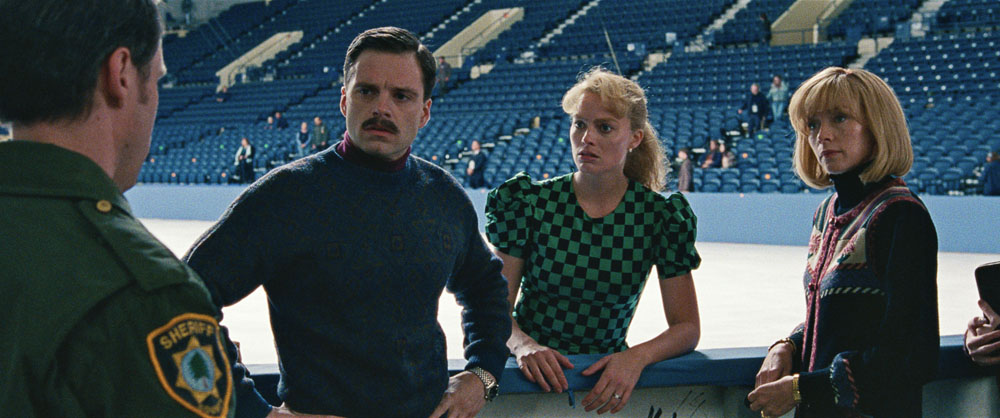 HULLFISH: Talk to me about cutting back and forth between the different aspect ratios. That was very interesting.
HULLFISH: Talk to me about cutting back and forth between the different aspect ratios. That was very interesting.
RIEGEL: That was an idea that Craig and the DP had early on with the interviews. They wanted it to be a different size. When it was scripted: there’s on-camera interview, there’s voiceover, and there’s breaking the fourth wall. All of that was scripted as an on-camera interview. When I first read the script I said to Craig, “There’s a lot of talking heads.” He said, “No, no, no, we’re going to use some as voiceover” and so it was really fun to try to figure out what that was going to be. How much do we need to see on camera? How much can we just hear? And then where we use the breaking of the fourth wall. I had everything in the interview format. Then as I began to weave them into the body of the film we had to be connected and whose point of view it was. That’s where I would decide where it felt natural to cut away from the interview and then just play it as voiceover, and/or breaking the fourth wall.
The “fourth wall” shots were shot both ways. All of that material was shot with the actors turning and talking to us, and also NOT turning and talking to us. We could use the voiceover or we could just cut from that and go back to the interview. So we tried all kinds of different things. At one point we even tried having no interviews at all in the film. It didn’t work. (laughs) We tried it, just in due diligence. It was fun to do that, but we tried it both ways. We tried a screening without breaking the fourth wall and then another one having those incorporated. I love them. I think they’re really fascinating and different and unique and work very well. Craig saw a documentary about Tonya Harding when she was 15 years old and there is a moment in the documentary where Tonya is talking to the camera in this very very matter of fact, shockingly detached way about the fact that her mother hit her – and she’s 15. Craig was very moved by this and realized that this is something that happens with victims of abuse. The survival mechanism is detaching emotionally. He was trying to come up with some way of having that sense of detachment. He wanted the violence in the film to not be sugarcoated because that is what determines why Tonya Harding is the way she is: her life, her upbringing – as it does with all of us. But he wanted some way of signifying that and the way he came up with was this breaking of the fourth wall which is actually the older Tonya talking to us in this very detached, unemotional way over the scene of her head has been smashed into a mirror – and I think it really gives an excellent subconscious interpretation of that kind of emotion, detachment, and survival.
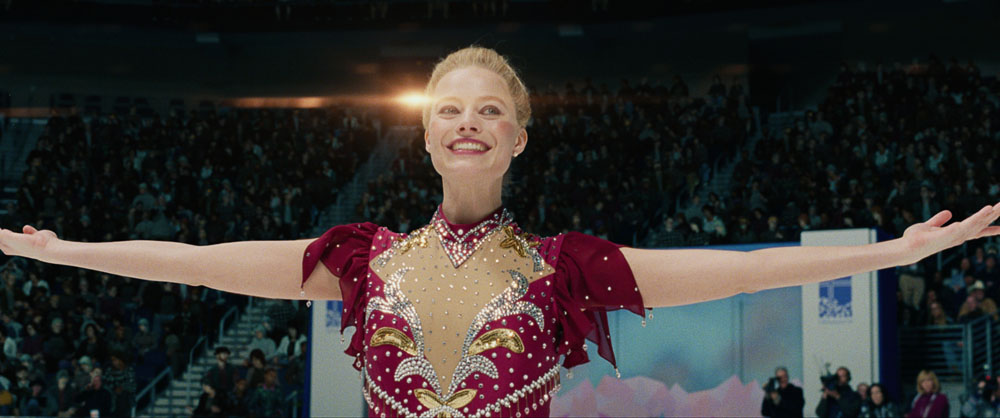 HULLFISH: How much structurally did you and Craig alter the film from the script?
HULLFISH: How much structurally did you and Craig alter the film from the script?
RIEGEL: I’d have to go back and look at the script. We moved a number of things around as you always do in this process. Obviously, there are certain scenes that got deleted — some wonderful scenes that got deleted — that were heartbreaking to yank out of the movie, but hopefully… DVD extras. There are a few things that got moved around but structurally it’s such a good unique, sound script that it was probably less than most films.
HULLFISH: That idea that a scene is so good that it’s heartbreaking to cut out of a movie is something that most non-editors simply can’t fathom. How can you have a great scene that needs to be cut?
RIEGEL: That’s always one of the more difficult moments. When you have a scene that you have to lose for the greater good of the movie. Oftentimes, when you’re screening a film, you find and feel the lulls as the audience is watching it and you have to address that. Sometimes it’s not exactly in that moment. Sometimes it’s three scenes earlier. It’s a hard puzzle to figure out. As with good writing, you want every word to be there for a reason. You want every scene to be there for a reason. It’s either motivating the emotion of the story or the character or it’s motivating the actual story logic as it progresses so that you are giving the audience everything that they need to have. The challenge of that is you always want the audience to be sort of leaning forward and interested and trying to follow along and never get too far behind the movie. You don’t ever want to be confusing or distracting or take them off the path and then have to emotionally or physically get them back into the story. You also don’t want them to get ahead of the story and be bored. So that’s where those things come from. You watch and you guide that by losing sometimes great lines great jokes whether they be entire scenes or just part of scenes to continue to motivate and stay on that path.
HULLFISH: So, the scene, by itself, is fantastic, but its contributions to the overall story are not strong enough that it justifies its existence.
There’s a great scene — played in a single shot — of Tonya putting on the makeup before one of her performances. It was disturbing to watch.
RIEGEL: Margo is just amazing in that scene. That’s a scene that is quite interesting. It was covered a lot more than obviously ended up in the film. It’s just all done in one shot now as you see it in the movie, but Craig shot quite a lot of coverage: everything from the coach walking in and observing her going through this and leaving her alone.
That’s the play of trying to figure out what should be in a movie and what shouldn’t be in a movie and how can you hold it? Because in the original dailies she went through and put all of her makeup on: lipstick and everything. It’s an incredibly powerful scene. You’d have to sit there for 10 minutes and watch it all. But it is as powerful in its entirety almost as it is in that section. But just holding on that straight-on shot of her in this extraordinarily not vain way where she’s trying to put on her makeup, where she’s just on the edge. It just builds the tension with her hands shaking and trying to put her makeup on and the tears welling up and it’s almost clown-like the amount of makeup that – first of all they have to wear when they’re out there in this huge stadium to see any of it – so close-up, it’s disturbing. You can hear her brain practically going through all of this emotion as she’s doing it. I just found it to be one of the most powerful, brave scenes in the movie. The simplicity of it is sometimes far more powerful.
It can be very very uncomfortable to do that and awkward and you’re sitting there with this woman with lipstick on her teeth and you feel embarrassed and awkward and compassionate for her. And holding that moment and staying still I think is extraordinary. She’s just doing everything she can to hold it together to get out there and perform again. This is her last Olympics and all of the pressure of what’s going on… I just can’t imagine.
HULLFISH: The other great tense scene is just after that with Tonya trying to get her skates tied. As an audience member I was on edge watching that. How did you build that tension?
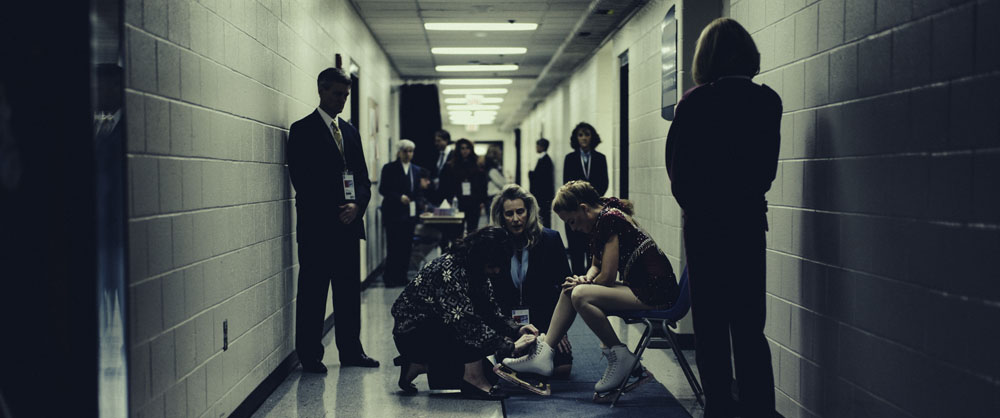 RIEGEL: That was actually very fun to build because there was a lot of coverage for that as well. But a lot of that is sound. You hear the rumbling of the people stomping their feet in the stadium.
RIEGEL: That was actually very fun to build because there was a lot of coverage for that as well. But a lot of that is sound. You hear the rumbling of the people stomping their feet in the stadium.
And we’re cutting back and forth with the announcers and the clock is ticking down and all of these different things are just building. You see Margot’s hand shaking, so nervous she can’t even tie her skates. And she’s got a problem with the lace: it’s too short, and other people are trying to help. It’s a really super-wonderfully tense scene. Looking back on that, that was actually one of the more difficult scenes to put together. There was a lot of coverage and there are so many moving parts with what’s happening in the stadium. That took a little bit of time and effort to get that correct.
HULLFISH: The way you describe it is almost as if it just happened that way. But of course it had to be EDITED that way. The clock on the wall is counting down, but you’re the one that decides when to cut to the clock on the wall…
RIEGEL: When to hear the announcer saying, “if she doesn’t get out here she’s going to get disqualified.”
HULLFISH: Walk me through your approach to a basic scene. You come in in the morning and you’re faced with a blank timeline and a bin full of selects.
RIEGEL” I can imagine what a writer goes through with a blank sheet of paper. It’s sort of the same thing. Sometimes I have no idea where to start. The first thing I do is watch all of the dailies for the scene. I don’t pay attention to what the director has called their select takes until after I’ve watched it. I just want to have my initial gut reaction to the performance and what’s happening in the scene. Frankly, I also try not to read the script too many times. I don’t want to be too familiar with it. I want to simply understand from the material that’s given to me: from geography to emotion to time — all of these different elements.
I remember once cutting a scene and there was some really crucial bit of information that I was certain was in dialogue. It was missing and I was like, “Where is this? Did I just hear it in one take? Why isn’t it in every take?” I finally went back to look at the script and it was actually a screen direction in the script but never got put into the movie. I just read it like everybody else did. Everybody involved with the film read it and it just became a part of the movie in our heads, but not on film.
HULLFISH: That’s happened to me before. You can’t have screen direction that you can’t see.
RIEGEL: I heard a director once say that, as an exercise, always try to have a read through of the script with no screen direction at all to ensure that kind of thing doesn’t happen, because sometimes there’s a lot of screen direction written into scripts that just go into your subconscious mind, then you think it’s there and lo and behold it’s not.
HULLFISH: Getting back to dailies and your approach: do you have someone put together a KEM roll of selects, or are you literally clicking on each set-up and take from the bin?
RIEGEL: No KEM rolls, just individual takes. When I used to work with film of course but not now. I’ve had such wonderful assistants my whole career, but on this they went above and beyond. Dan Boccoli with whom I’ve worked probably seven or eight movies now was my assistant in Los Angeles during dailies. He couldn’t come with me to New York for post. I had another assistant there, Steve Jacks, who was spectacular as well. Dan knows how I like things prepared, which is relatively simply. He goes through and does all of the technical stuff,
making sure everything’s in sync, and that everything got transferred properly. He just sets the bins up in masters, mediums, over shoulders, just in basic order. (as she says this, she draws out a row in the air for each type of shot, indicating that each shot type is in a row in the bin).
HULLFISH: This is in Frame view? (thumbnails or poster frames)
RIEGEL: Exactly. I just go through one by one. I watch all of the dailies. I have ideas. I take notes.
Sometimes extensive notes, sometimes quite cryptic notes – just for memory purposes – so that I can go back and find a moment. Sometimes I use the locator button to just kind of quickly mark a moment or a look or a particular line reading that I like, so I can find it again quickly and when I’m done watching dailies I just begin: sometimes at the beginning, sometimes in the middle, sometimes the end – depending on the scene – and work my way either forward or outside or backwards, to construct the scene with all the moments that I find real and believable… that moved me. A little bit regardless of shot size. Although I think size plays into that intuitively.
And then I watch a scene a couple of times, tighten it up, make some changes, realize that there’s an energy shift when I’ve changed takes that doesn’t play as well as I thought it would play. Then I have to go back and keep a single take or sometimes I’m allowed to switch takes very easily. All of those little bits and pieces that go into it – just sort of constructing the scene once and then I try to put it away and look at it the next day with fresh eyes. Sometimes I’m horrified. “What was I thinking?!”
HULLFISH: You’re not alone. I’ve heard that about 100 times.
RIEGEL: And other times I come in the next morning and I hit play, thinking I’ve got the most atrocious scene ever and I’m like, “Hey, wait a minute! That’s actually not bad.” Make some adjustments and then I send it to the director right away.
I try to send directors stuff, Craig or any director that I’m working with, as quickly as possible so that they can see what they have. No sound effects, no music – just my initial gut reaction in an assembly of a scene. I want them to see it and make sure that they have what they want
in terms of coverage, performance and tone. Then, if they want, they can make their adjustments or we can begin a dialogue about what I should do. Sometimes a scene might be put together nothing like what they originally imagined in their mind. I hope I can get them to watch these scenes a few times before they start reacting to them. I believe this is much easier to do if they’re individual scenes. Then as things start to build, I get to show that scene attached to the scene after it, and they see that first scene again. And by the third or fourth time they’ve watched it, they’re finally watching it as its new entity: As the movie – not the movie that they had in their head – and that doesn’t mean we’re not going to change it like crazy, it just means that they’re not stuck in what they had in their head early on. So by the time they finished shooting they’ve actually seen the entire movie: maybe completely out of order and in little bits and pieces but they’ve seen it. Nothing’s a mystery. And so when we sit down to watch it beginning to end the first time, it’s not as shocking.
HULLFISH: I remember a spot in the movie — only really a single place — where it has built up into some really pretty tight close-ups. Do you know where I’m talking about?
RIEGEL: Craig and I always have this sort of on-going thing: I always try to avoid closeups as much as possible for as long as possible. I think that they are brilliant when used sparingly and when used too much they just take away the impact.
I think it was much easier before, when people cut on film and actually used to screen the movies all the time on a big screen, to really understand how these things are going to translate when they are 30 or 40 feet high. When you’re doing a feature, that’s your goal: to make everything play big. And so when you get so used to watching it on these small monitors now, I think you can very easily go to the close-up too quickly because you’re judging it in this small space. And so you feel like you need that impact of a close up. But when it’s actually 30 feet high, a medium shot may do it very well. So I try to avoid that. I never really try to pay too much attention to the size. I’m always going for the emotion of the performance and then that sort of dictates everything. And then if I need extra impact I’ll find a take that’s closer.
HULLFISH: So you don’t use selects reels.
RIEGEL: Almost never. I did use ScriptSync on this one for the very first time. I have never done it before. I’ve never really felt the need to do it before because I watch everything so thoroughly and I take these notes and I use markers. I could always sort of find stuff before pretty quickly.
The way they shot the “interview” material on this, I just can’t imagine not using ScriptSync. I think we’d still probably be cutting the movie because they shot so much interview material: hours.
Everything else in the movie was shot on film, but the interviews were shot digitally, so the camera was just rolling and there were these long, long takes where they would jump around from scene to scene. Nothing was slated. They were doing retakes within takes. So it was just very hard to find stuff.
HULLFISH: Now when you’re talking about interviews, for those people who have not seen this movie, you’re not talking about interviews with the actual people. You’re talking about scripted scenes with the actors that SEEM like interviews.
RIEGEL: Right. So, all of that 4:3 aspect footage. The movie has all of these interview sequences with the various characters and that material was shot digitally.
HULLFISH: And was a lot of that ad-libbed? You’re talking about how much footage there was.
RIEGEL: Some was ad libbed, although we always got the scripted versions first. Sometimes they would give all kinds of options. It’s woven throughout the entire movie, and there’s some that we never used, but they shot a lot. I think for Tonya alone there were 6 or 7 hours and hours of footage. It would be difficult to find the material without ScriptSync.
HULLFISH: It sounds like, to build the sequences, you weren’t really using it.
RIEGEL: Just to find the options. I would just go through and find all of the line readings of these lines and I can listen to them and pick them and start to build those interviews sequences in between all of the other footage.
HULLFISH: Because you can just click on a line in the script and it’s right there. You don’t have to go search for it.
RIEGEL: Yeah. It’s brilliant.
HULLFISH: Do you think you’ll use it again, now that you’ve tried it?
RIEGEL: If I have situations like this, yeah. It’s time consuming and certainly if I have the crew to support them spending the time doing that when there’s so much other work for them to do, I would love to do it but unless I really need to, I like to keep them free enough to do the rest of their work.
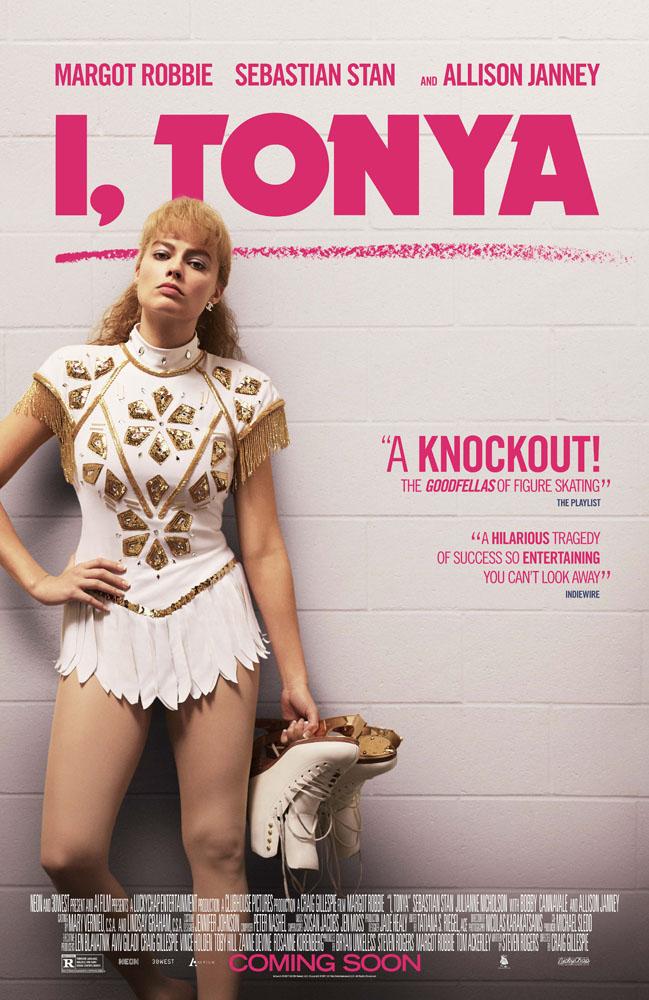 HULLFISH: The last film that I used ScriptSync on we decided just to do six or seven big scenes. So the smaller scenes we didn’t ScriptSync because I figured I could find it.
HULLFISH: The last film that I used ScriptSync on we decided just to do six or seven big scenes. So the smaller scenes we didn’t ScriptSync because I figured I could find it.
RIEGEL: Exactly.
HULLFISH: But something like a big dinner scene with six people or something like that, it makes sense to use ScriptSync.
RIEGEL: Exactly. So that’s why I said I just use it for the interview stuff. If it were necessary, I could completely use it for any random scene. I think each individual movie will dictate how it’s used in the future.
HULLFISH: Other people have talked to me about ScriptSync and how they don’t like to cut with it initially because they feel like it pulls them out of that whole daily process.
RIEGEL: I can imagine.
HULLFISH: The other great place for ScriptSync is when trying to choose takes or line readings with the director. ScriptSync is the easiest place to go.
RIEGEL: You’re absolutely right. It is very nice in that situation but in all honesty I’ve been able to find those different line readings pretty quickly. I’m so familiar with the material and I know where they fall in the take and it’s usually pretty quick when we have to go back and investigate each and every reading. One of the luxuries with this film is that I’ve worked with Craig so much, I know what performances he’s going to really want for most of it.
HULLFISH: I’ve kept you for an hour but I’m so much enjoying this conversation that I don’t want to let you go.
RIEGEL: Me too.
HULLFISH: I’ve been trying for over year to talk to you. I think originally it was because you were cutting Game of Thrones, but you were always booked. Now, after this Oscar nomination your dance card will really be full.
RIEGEL: That still sounds really peculiar to hear you say that. Lovely, but peculiar. Honestly this film was was really truly an independent film. We had no studio attached. We had no distribution or anything. When we finished, just prior to going to the Toronto Film Festival in September, my hope was: “I hope it gets a good distributor and that we get a good review or two” because it takes some bravery and tallent to get this one out there. Everything has been just marvelous gravy since then.
https://www.youtube.com/watch?v=U-mPlb–MWc
https://www.youtube.com/watch?v=aWQaT_KqjSs
HULLFISH: I did just think of an important thing because you mentioned something that threw me: You said you had two different assistants in two different locations. What the heck is that about? You edited in LA and then you edited in New York, but they shot in Atlanta?
RIEGEL: Both Craig and I live in L.A. When they were shooting in Atlanta I stayed here with my assistant in L.A. and put together the whole first assembly. Then we went to New York. We went to New York to do all of the post – The director’s cut, the sound mix, the finishing, the DI, visual effects – they were all done in New York because of the tax incentives. This was a small movie and we needed every dime we could scrape together from anywhere. It just was cheaper to do it there, so we spent six months there.
HULLFISH: In New York. The city itself?
RIEGEL: I know. Yes. Putting us up in New York for six months somehow was cheaper than letting us stay home. I don’t really understand budgets, but that’s what they said.
HULLFISH: Thanks for a great, great interview. Congratulations on all your success. Have a wonderful day.
RIEGEL: Thank you. Bye bye.
To read more interviews in the Art of the Cut series, check out THIS LINK and follow me on Twitter @stevehullfish
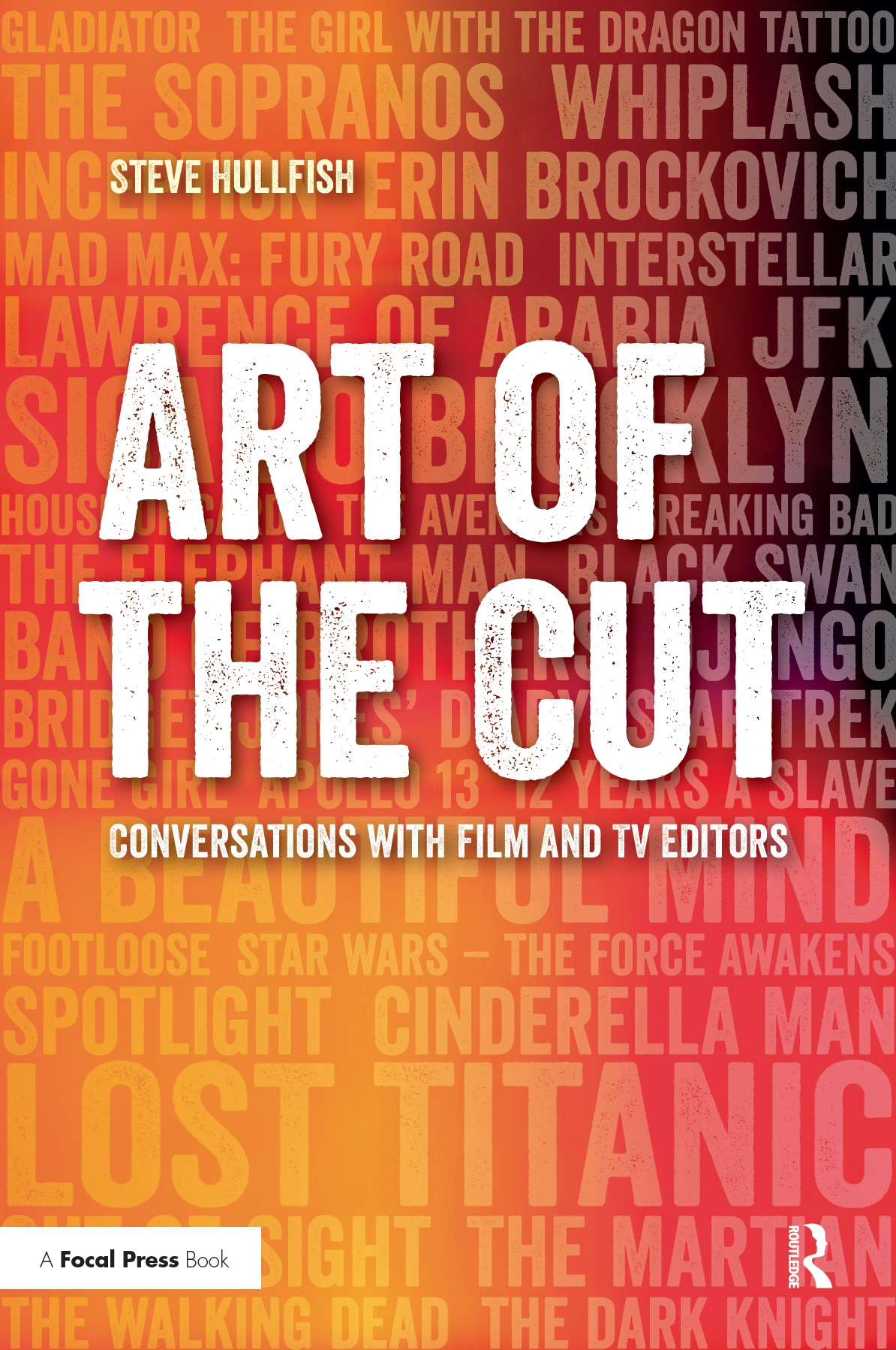 The first 50 interviews in the series provided the material for the book, “Art of the Cut: Conversations with Film and TV Editors.” This is a unique book that breaks down interviews with many of the world’s best editors and organizes it into a virtual roundtable discussion centering on the topics editors care about. It is a powerful tool for experienced and aspiring editors alike. Cinemontage and CinemaEditor magazine both gave it rave reviews. No other book provides the breadth of opinion and experience. Combined, the editors featured in the book have edited for over 1,000 years on many of the most iconic, critically acclaimed and biggest box office hits in the history of cinema.
The first 50 interviews in the series provided the material for the book, “Art of the Cut: Conversations with Film and TV Editors.” This is a unique book that breaks down interviews with many of the world’s best editors and organizes it into a virtual roundtable discussion centering on the topics editors care about. It is a powerful tool for experienced and aspiring editors alike. Cinemontage and CinemaEditor magazine both gave it rave reviews. No other book provides the breadth of opinion and experience. Combined, the editors featured in the book have edited for over 1,000 years on many of the most iconic, critically acclaimed and biggest box office hits in the history of cinema.

Filmtools
Filmmakers go-to destination for pre-production, production & post production equipment!
Shop Now